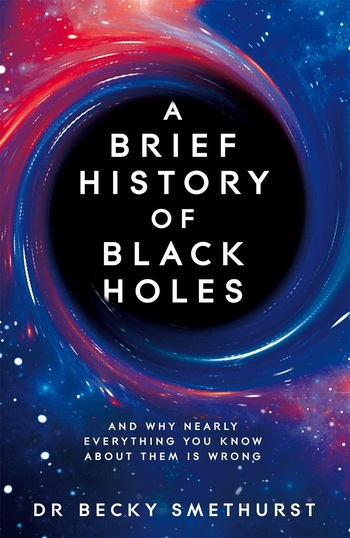In a cosmos teeming with celestial marvels, few phenomena evoke as much intrigue and enigma as black holes. These gravitational abysses, which ensnare light and warp the very fabric of space-time, have provided fertile ground for both scientific inquiry and philosophical musings. “A Brief History of Black Holes” artfully encapsulates this duality, weaving an intricate narrative that juxtaposes hard science with the ethereal wonder that black holes inspire.
At its core, the book embarks on a profound exploration of the genesis of black holes, unraveling their theoretical underpinnings and the evolution of our understanding. The initial chapters expose readers to the pioneering work of physicists like Albert Einstein, whose General Theory of Relativity provided the framework for comprehending gravitational singularities. The text delves into the monumental shift in astrophysical thought that reframed the cosmos from a static expanse to a dynamic, ever-evolving tapestry dominated by gravity’s relentless pull.
As readers traverse these foundational concepts, they are introduced to the critical role played by mathematicians and astronomers in the early 20th century. The exposition pays homage to luminaries such as Karl Schwarzschild, who derived solutions to Einstein’s equations, conceptualizing what would later be known as Schwarzschild black holes. This backdrop cultivates an appreciation for the often-overlooked mathematical elegance that fuels astrophysical discovery.
However, the allure of black holes extends beyond mathematics and physics; they serve as metaphors for humanity’s insatiable quest for knowledge. This book deftly oscillates between empirical evidence and philosophical contemplation, prompting readers to ponder why black holes grip our collective imagination. What is it about these immaterial voids that resonates on a deeply psychological level? The text proposes a hypothesis: black holes personify our fear of the unknown and the allure of chaos, encapsulating a dichotomy between destruction and creation. In a universe defined by entropy, they remind us of our precarious existence in an indifferent cosmos.
The narrative further elaborates on the observable phenomena associated with black holes, such as quasars and gamma-ray bursts. These cosmic beacons, born from the violent interactions of matter and energy near black holes, beckon astronomers to formidable cosmic spectacles that outshine entire galaxies. The book encourages an understanding of how these phenomena relate to the fundamental forces governing our universe. Moreover, it highlights the insatiable curiosity that drives humanity to unravel the mysteries of these obscured entities, reinforcing the notion that, although black holes are exceedingly enigmatic, they act as gateways to the universe’s most profound secrets.
Another fascinating dimension explored is the interplay between black holes and the fabric of time itself. The text delves into the mind-bending implications of time dilation and gravitational waves, phenomena that challenge our innate perceptions of reality. Black holes, in their voraciousness, warp time itself, presenting an opportunity for philosophical inquiry into the nature of existence. What does it mean to encounter an entity where the rules of reality as we know them collapse? The book articulately stirs these contemplations, inviting readers to gaze into the abyss—not with fear, but with a sense of wonder.
As scientific inquiry has advanced, so too has our conceptualization of black holes. The introduction of concepts such as Hawking radiation offers a glimpse into a universe continuously evolving beyond fixed paradigms. Readers are encouraged to appreciate the significance of Stephen Hawking’s groundbreaking assertion that black holes are not merely cosmic prisons, but rather entities capable of emitting radiation, thus challenging the notion of “event horizons” as impenetrable. This revelation not only alters our understanding of black holes but also ignites a renewed fervor for revolutionary thought within the realms of theoretical physics.
The book also nuances the public perception of black holes, addressing their portrayal in popular culture, which often sensationalizes the phenomenon. Through a thoughtful dissection of cinematic interpretations and science fiction, the text underscores the juxtaposition between factual science and creative license. This contrast fosters an appreciation for how narrative storytelling can serve as a bridge between obscure scientific concepts and public consciousness, enhancing engagement with the cosmos.
Despite the book’s accessible prose, it does not shy away from challenging the reader to grapple with complex ideas. It demands an intellectual engagement that is both stimulating and rewarding. The meticulous attention to detail reinforces the significance of each concept, illustrating that a thorough understanding of black holes is not solely a scientific pursuit but a cultural endeavor as well. This duality enriches the reading experience, blending the ardor of scientific discovery with philosophical inquiry.
In culminating reflections, “A Brief History of Black Holes” transcends its numerical designation promising only a brief narrative. It encapsulates the profound, multifaceted relationship between humanity and the cosmic unknown. It stands as a testament to our relentless pursuit of knowledge, imbued with questions about existence, time, and the universe itself. The book invites readers to embrace the mystery, inspiring a blend of curiosity and reverence for the intricate dance of creation and destruction that black holes embody.
Ultimately, this work is more than just a summation of astrophysical insights; it is an invitation to ponder our place within the cosmos and to explore the deeper implications of the universe’s most enigmatic entities. Through this exploration, one cannot help but emerge with a renewed sense of wonder, equipped not only with knowledge but also with a sense of connection to the vast, awe-inspiring universe that surrounds us.
